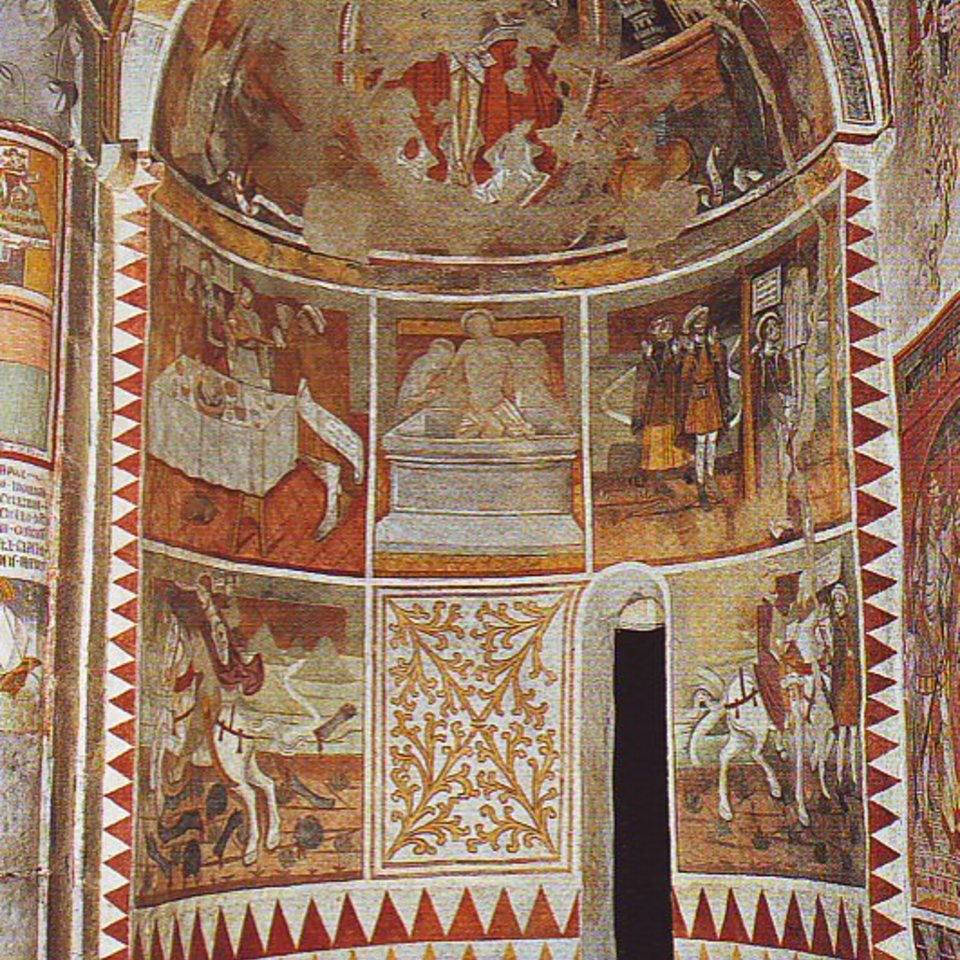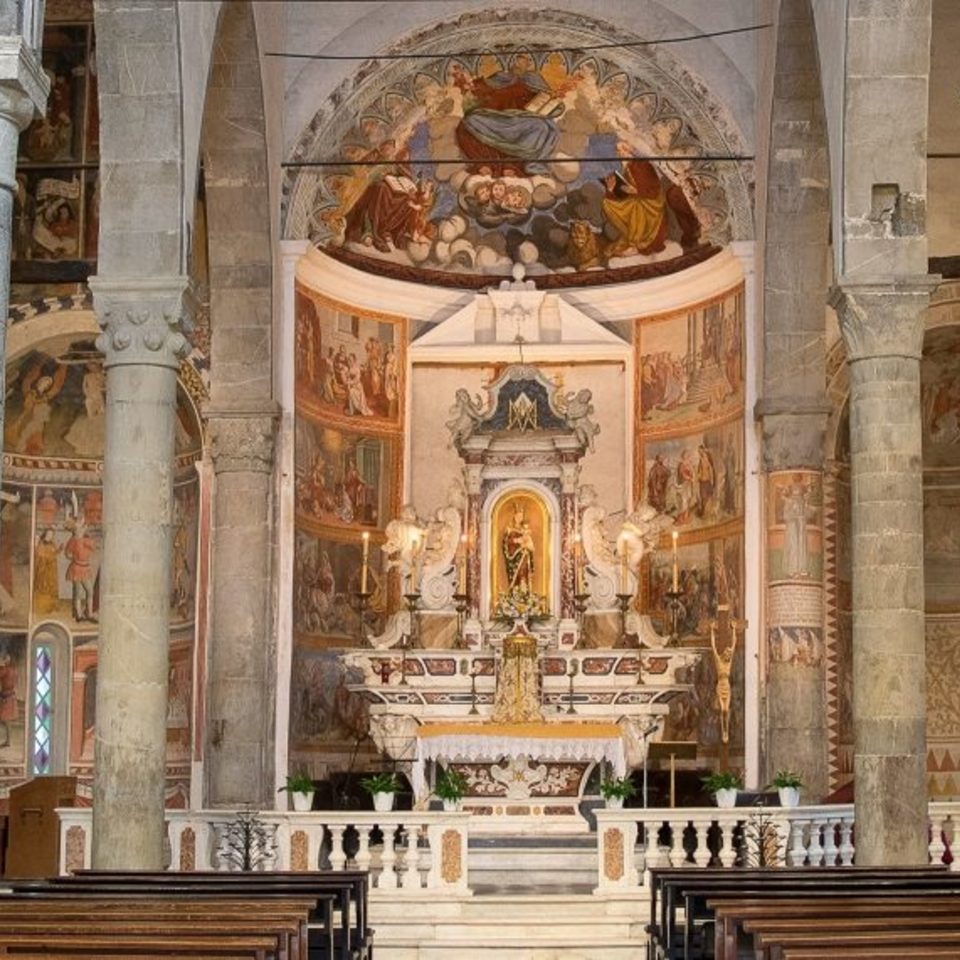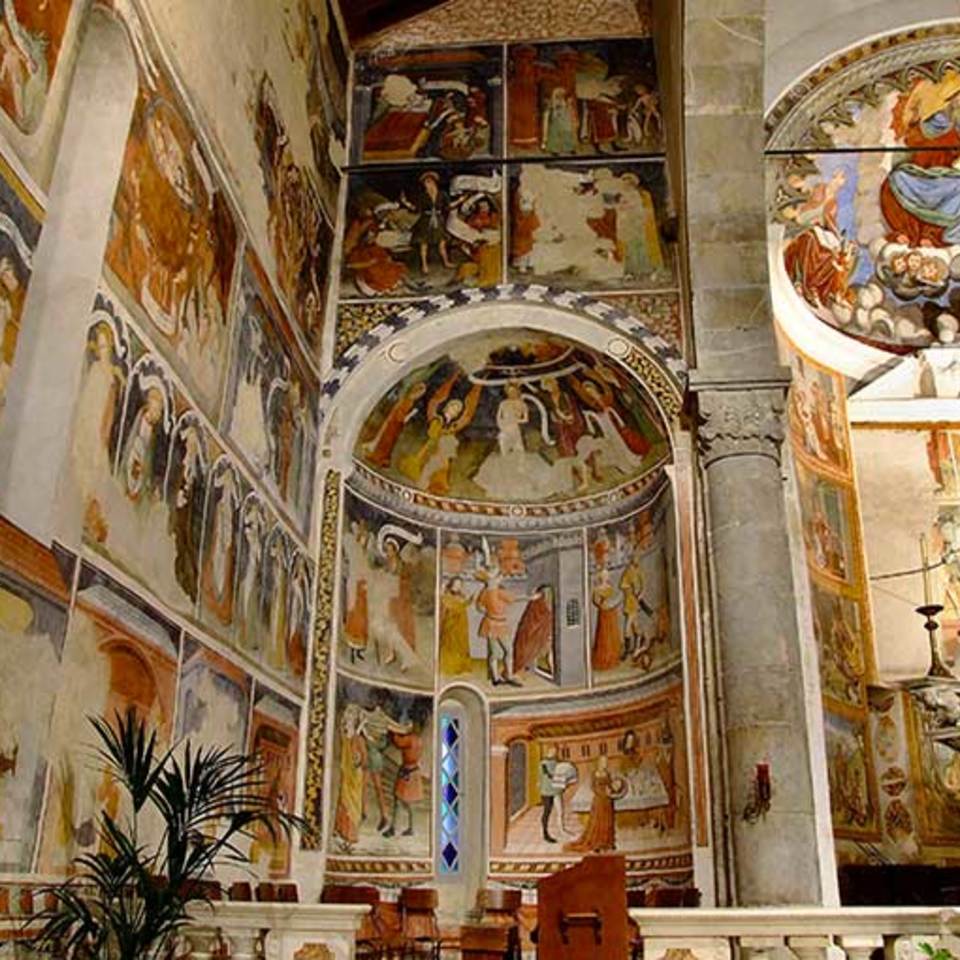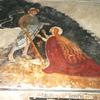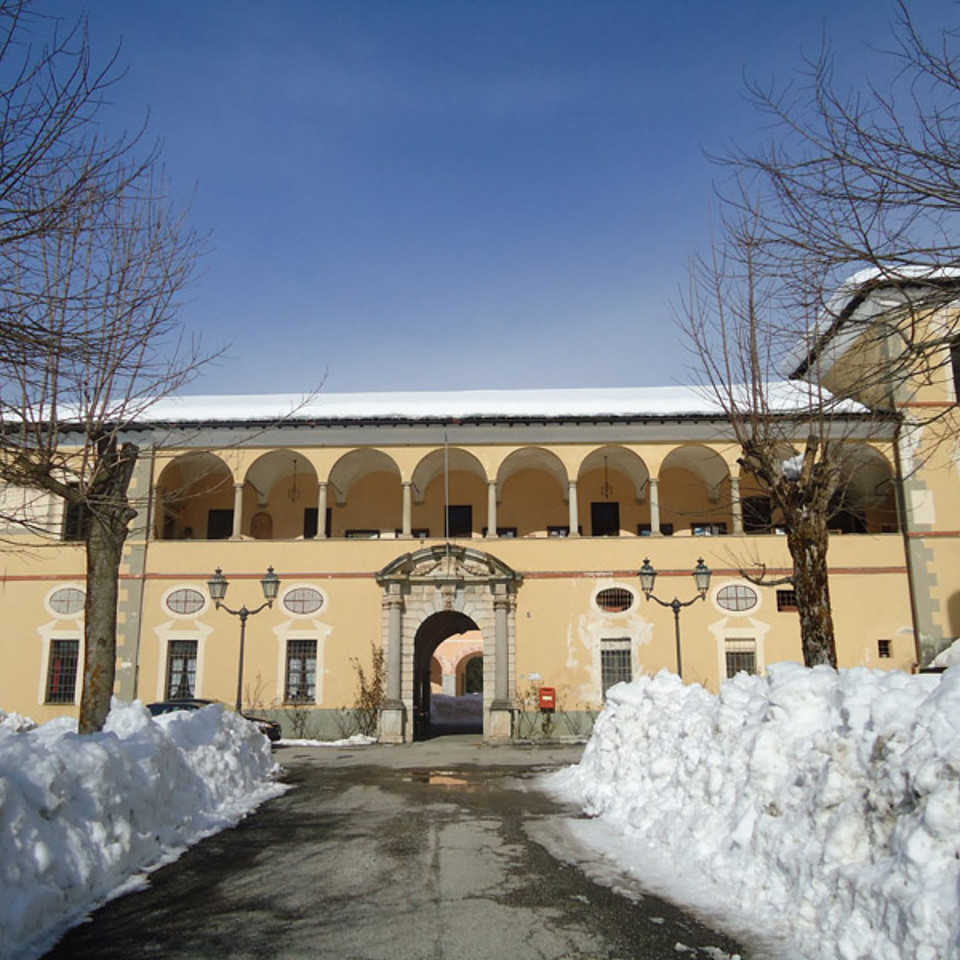 Chiese a porte aperte
Chiese a porte aperte
 Share
Share
 Tweet
il mio itinerario
?
Tweet
il mio itinerario
?
Santuario di Nostra Signora delle Grazie
Diocesi di Mondovì ( sec. XV )
Via Nostra Signora delle Grazie, 18100 Imperia IM
Perched on a promontory surrounded by green olive trees, the Sanctuary dominates the village of Montegrazie, a small hamlet of Imperia.
Its history is rooted in the 13th century when, according to a tradition common to other Marian places of worship in Western Liguria, the Madonna appeared to a deaf-mute shepherdess and indicated the spot as perfect for the construction of a chapel. Having become a point of reference for the local community, the growing worship of Mary led to the construction next to this first building, which still exists, of a new and larger church beginning in the first half of the 15th century. It was completed by 1450, the date recorded in an inscription above the main portal. The façade has two round-arched side windows and an impressive portico resting on four columns with Gothic-style capitals.
Internally, the structure is divided into three naves separated by two rows of ten columns and is embellished with outstanding wall paintings on several registers, from the top of the roof to the ground. Brothers Tommaso and Matteo Biazaci da Busca were entrusted with the pictorial decoration of both walls of the north nave (Theory of Death and the Underworld and Scenes from the Passion of Christ), of the main apse (Adam and Eve and Theory of Apostles) and the left apse (Stories of St. John the Baptist). Individually, the decoration, completed on 30 May 1483, with the Scenes of the Passion, on the right wall of the nave, must have already presented conservation problems if we consider that, in the 1440s, the painter Pietro Guido da Ranzo (1499-1542) intervened with a new layer of plaster and an almost exact reworking of Biazaci's idea.
The frescoes in the right apse, painted in 1498 by Gabriele della Cella from Finale Ligure, are dedicated to St. James the Greater, as is the right half-column with two votive offerings from the sea and the Blessed Bernardino da Feltre, the founder of the monti di pietà. After the Council of Trent (1545-1563), the building underwent extensive alterations with the creation of five new altars, the erection of a pulpit and, above all, the covering of the entire pictorial apparatus with a thick layer of plaster. Traces of the paintings were brought to light following consolidation work on the building damaged in the 1887 earthquake. In 1926, during the re-roofing and expansion of the sacristy, the frescoes of the side apses were also recovered. With the demolition of all non-original structures, with the exception of the Baroque marble high altar, the sanctuary took on its present-day appearance in 1939.
In 1951, the first comprehensive restoration made it possible to restore the visibility of the entire decoration, the methods and phases of which were clarified during the work carried out in 1993-1996. Also belonging to the original decoration of the Sanctuary is the imposing polyptych with several compartments on three superimposed registers, created by the Milanese painter Carlo Braccesco “Carolus Mediolanensis pinxit 1478”, now in the local parish church.
I cicli affrescati presenti nel Santuario di Montegrazie sono legati alle scene della vita di Cristo, della vita di San Giovanni Battista, della creazione e del Giudizio Universale. Nella navata laterale trova posto l’imponente ciclo raffigurante le virtù, i vizi e le pene infernali cui si sovrappone il Giudizio Universale. La raffigurazione non presenta la disposizione canonica in fasce sovrapposte nelle quali alle Virtù sottostanno i corrispondenti Vizi e le relative pene infernali: nel caso di Montegrazie le Virtù sono raffigurate in basso e procedono da destra a sinistra; ad esse succedono, nel medesimo registro, i Vizi, i quali procedono sempre da destra a sinistra, incatenati al collo e condotti da un diavolo. Grande spazio è dato, nel registro superiore, alle pene infernali corrispondenti. Alle scene legate al Giudizio, alle Virtù e ai Vizi sono collegate quelle dei progenitori, Adamo ed Eva, dai quali hanno inizio tutte le vicende della salvezza.
L’abside della navata sinistra presenta le scene della vita di San Giovanni Battista, le quali sono desunte dai Vangeli canonici: si legge il battesimo di Cristo nel Giordano, la cattura del Battista, la decollazione e Salomè che reca alla madre Erodiade la testa del Battista posta su di un piatto.
Nel Santuario è infine presente il polittico del milanese Carlo Braccesco nel quale la Vergine è attorniata da una teoria di santi tra i quali si riconoscono, tra gli altri, San Giorgio, San Bernardo da Mentone, San Bernardo di Chiaravalle, San Cristoforo, San Pietro Martire, Sant’Antonio abate, San Giovanni Battista, San Sebastiano, Santa Caterina d’Alessandria, Santa Caterina da Siena.
Nearby
Art
External links
Accessibility
| Lun-Dom | 08:30 - 19:30 |
|---|
The building may be visited at the times indicated unless a religious function is in progress
Info
- cathedral
- Cattedrale di Mondovì
- diocese
- Mondovì
- type of building
- Santuari
- address
- Via Nostra Signora delle Grazie, 18100 Imperia IM
Services
- accessibility

- reception

- educational

- guides

- bookshop

- food venue

ACCOMMODATIONS NEARBY
CASA DI SPIRITUALITA CERTOSA DI PESIO
LOCALITA' CERTOSA DI PESIO 1, CHIUSA PESIO, 12013, CN
Ostello con indirizzo spirituale
0171738123 / 0171738284 certosa@consolata.net




